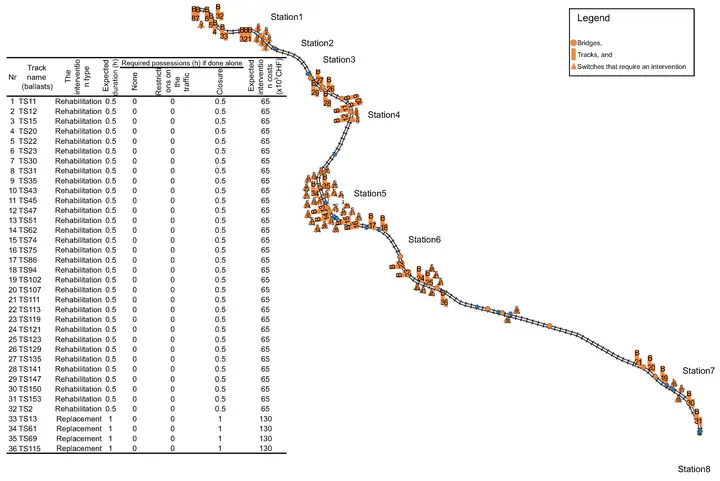Enhancing Railway Track Intervention Planning: Accounting for Component Interactions and Evolving Failure Risks
 Wahrscheinlichster Interventionsbedarf am GIS-Modell der Fallstudie zwischen $t=11$ und $t=15$.
Wahrscheinlichster Interventionsbedarf am GIS-Modell der Fallstudie zwischen $t=11$ und $t=15$.
Zusammenfassung
Bridge managers need to generate a complete overview of required interventions, possession windows and the likely costs 10-20 years ahead of execution. These, even if approximate, help ensure stable train schedules. With the increasing amount of available data and the increasing desire to exploit digitalisation to improve decision-making, bridge managers are perfectly poised to make or improve these estimates by moving on from current qualitative methods. This paper proposes a way in the current climate to use digitalisation and existing data to generate approximate overviews of required interventions 10-20 years ahead of time, including estimates of component-level bridge interventions, possession windows, likely costs, and the increases in failure risks if interventions are postponed. A demonstration is done on 41 bridges of a 25 km railway network in Switzerland. It is argued that the algorithm generates a more complete and consistent overview of component-level interventions, possession windows, and costs compared to the current qualitative methods. Additionally, the algorithm generates a solid basis for the initiation of detailed investigations of the bridges by engineering offices, i.e., the investigations that result in the information required for scheduling an intervention, as well as estimating the type of intervention and track possession are required.